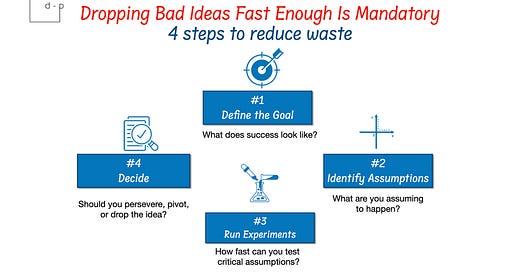Shall We Stop Building Useless Features? Let Me Tell You How AI Can Help You Rock!
4 steps to reduce waste and boost value
Hi everyone,
I’m getting frequent questions about AI replacing PMs. How true is that?
Many people are claiming AI will make PMs obsolete. Well, I disagree with that, but I’d say backlog managers have no future; AI will replace them. Yet, strong PMs will become even stronger with AI.
Let me tell you what generative AI will transform the game: Product Disco…



